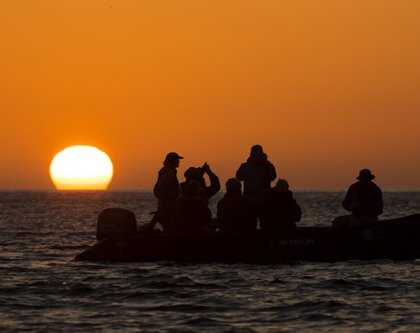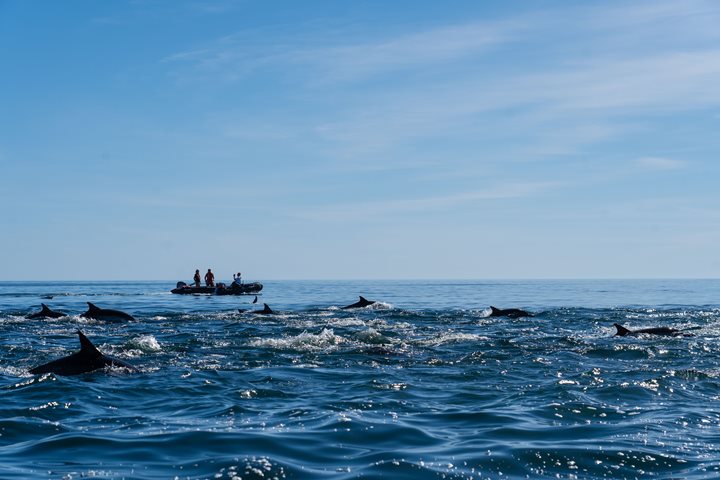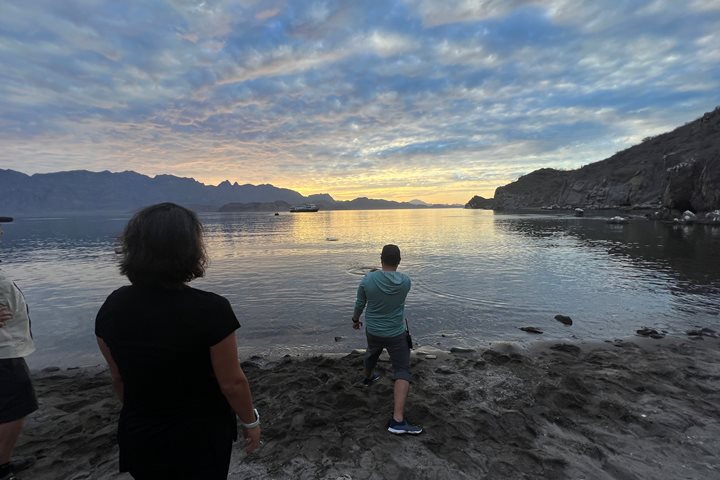This morning we woke up listening to guttural sounds nearby; always ready to explore, we boarded our expedition landing craft before sunrise and approached the ghostly and whitish shape off the ship. Los Islotes is a guano-covered rock located in the northern portion of the Espiritu Santo Island Complex Biosphere Reserve, a natural protected area and a wonderful place to watch and enjoy wildlife.
It is also home to a breeding colony of California sea lions, whose varied calls we heard in the dark. California sea lions, locally known as “lobos marinos,” are the main attraction at Los Islotes and we all had great photo opportunities of them swimming around us, playing or just sleeping on the rocks. The month of May is the time when most of the sea lions here are born, and today we watched numerous very pregnant females with voluminous bellies and a tired look in their eyes. Big mature bulls patrolled their territories in hopes of attracting more ladies and deterring potential competitors. Farther up above them, many different kinds of birds perched on the rock walls or flew around, including brown and blue-footed boobies, frigatebirds, pelicans and turkey vultures.
In order to fully appreciate a sea lion you need to watch it underwater, so we dressed in wetsuits or t-shirts and shorts and went snorkeling. We had a great time watching the sea lions doing all kinds of pirouettes with such agility that could put a fish to shame! We also enjoyed the abundance and diversity of fishes with colorful names such as yellowtail surgeonfish, clubhead blenny, scissortail damselfish, shovelnose guitarfish and many more.
During lunch, which we enjoyed up on the bridge deck, National Geographic Sea Lion sailed along the east side of Espiritu Santo Island and headed south towards Bonanza Bay; there we all went ashore and had a wonderful afternoon kayaking, snorkeling, hiking or simple walking the endless white sand beach for a very fitting end of a marvelous week in the Sea of Cortez.







